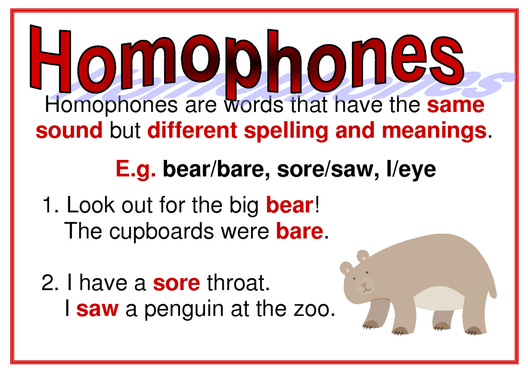Imagine a world where words sound alike but mean entirely different things, especially when it comes to animals. Welcome to the quirky realm of new animal homophones. These linguistic gems can add a playful twist to our conversations and writing, making language more vibrant and fun. Whether you’re an avid wordsmith or just someone who enjoys witty banter, understanding these unique pairs can elevate your communication game. Let’s dive into this fascinating topic together and discover how animal homophones enrich our everyday language.
What are Animal Homophones?
Animal homophones are pairs of words that sound the same but have different meanings. When it comes to animals, these playful word pairs can create delightful imagery and clever puns.
For example, “hare” (the animal) and “hair” (what grows on your head) might trip up some folks in conversation. These quirks of language can lead to amusing misunderstandings or creative expressions.
They often find their way into poetry, stories, and everyday chatter. This makes them a fun tool for writers looking to spark joy or intrigue in their work.
Exploring animal homophones not only enhances our vocabulary but also invites curiosity about how language evolves. It’s a fantastic way to engage with words while appreciating the whimsical side of communication!
Examples of Animal Homophones
Animal homophones are playful pairs that sound alike but have different meanings. They can add a fun twist to your language.
Consider “bear” and “bare.” One evokes an image of a large, furry creature while the other reveals something unclothed or exposed.
Then there’s “deer” and “dear.” A graceful animal versus a term of endearment—it’s fascinating how context changes everything.
Let’s not forget about “fowl” and “foul.” The first refers to birds like chickens, while the second often describes something unpleasant or offensive.
These examples show just how rich our language can be. Each pair sparks creativity in writing and conversations. Recognizing these quirky words opens up new possibilities for expression.
The Importance of Animal Homophones in Language
Animal homophones add a playful twist to language. They enrich our vocabulary and enhance our communication skills. These delightful word pairs capture the imagination, making conversations more engaging.
Using animal homophones can clarify meaning in writing and speech. For example, “bear” (the animal) versus “bare” (uncovered), demonstrates how context shapes understanding. This distinction helps prevent confusion in everyday dialogue.
Moreover, they introduce humor into discussions. A clever play on words can lighten the mood and spark creativity. Whether it’s in poetry or storytelling, these quirky terms breathe life into mundane expressions.
Understanding animal homophones also encourages critical thinking about language structure. It prompts us to consider sounds and meanings deeply while exploring linguistic intricacies. The charm of this wordplay often captivates both young learners and seasoned linguists alike, revealing the beauty behind sound-alike words that carry different meanings.
How to Use Animal Homophones in Writing and Speech
Using animal homophones can add a playful twist to your writing and speech. When you incorporate them, ensure they fit naturally into the context. For instance, saying “the hare ran fast” instead of “the hair ran fast” can create an engaging image.
Play with sound and meaning. Using phrases like “I can’t bear it” or “I can’t bare it” not only makes your language more vivid but also invites the listener to think creatively.
In dialogue, these words can spark humor or clarity. Characters may express themselves in unexpected ways that resonate with audiences.
For poetry, harnessing their dual meanings allows for deeper layers of interpretation. The rhythm created through homophones often enhances the overall flow as well.
Experimentation is key here; don’t shy away from trying different combinations until something clicks!
Common Mistakes When Using Animal Homophones
Using new animal homophones can be tricky. Many people confuse similar-sounding words, leading to some humorous misunderstandings.
One common mistake is mixing up “bear” and “bare.” While the first refers to a large mammal, the latter means unclothed. This mix-up can lead to awkward phrases like “I saw a bare in the woods.”
Another frequent error involves “deer” and “dear.” A heartfelt letter might unintentionally become about wildlife if you aren’t careful with your wording.
Sometimes, individuals may also overlook context clues that indicate which homophone should be used. For example, using “fowl” instead of “foul” in sports scenarios could cause confusion among listeners.
These errors are easy to make but important to catch. Paying attention during writing or speaking will help clarify meanings and avoid these amusing blunders.
Fun Activities to Practice Animal Homophones
Engaging with animal homophones can be a delightful adventure. Try creating flashcards featuring pairs of homophones, like “bear” and “bare.” This visual approach helps reinforce their meanings.
Another fun activity is to play word association games. Say one animal name aloud and challenge friends to come up with its homophone quickly. The excitement builds as everyone races against the clock!
Storytelling offers another creative outlet. Write short tales incorporating various animal homophones, allowing your imagination to run wild while enhancing your vocabulary skills.
Art projects can also add flair! Draw illustrations representing each pair of homophones, merging creativity with language learning.
Consider forming a group for weekly challenges—each member presents sentences using selected animal homophones. This collaborative effort keeps everyone engaged and promotes learning in an enjoyable way.
Conclusion
The world of new animal homophones is both quirky and fascinating. These playful words add a touch of creativity to our language, allowing for clever wordplay and delightful puns. Whether you’re crafting stories or engaging in conversation, embracing these unique terms can enhance your communication style.
By understanding the nuances of animal homophones, you open up opportunities for humor and engagement with your audience. They offer a fresh way to express ideas while keeping things light-hearted. So why not take some time to explore this whimsical aspect of language?
As you incorporate animal homophones into your writing or speech, remember that practice makes perfect. Experiment with different combinations and see how they fit naturally into your content. And don’t hesitate to share them with others; after all, spreading joy through language can be incredibly rewarding.
Dive into the fun world of new animal homophones today! You might just discover a newfound appreciation for the playful side of words—and who knows? You may even inspire someone else along the way.



